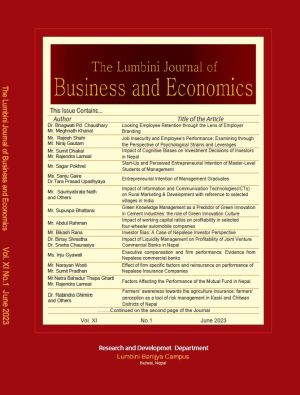Effect of working capital management and credit management policy on financial performance of commercial bank in Nepal
DOI:
https://doi.org/10.3126/ljbe.v11i1.54333Keywords:
Return on asset, return on equity, working capital, loan to deposit ratio, capital adequacy ratio, non-performing loan, cash asset ratio, rate of bank’s ability to return depositsAbstract
This study analyzes the impact of working capital management and credit management policy on the financial performance of Nepalese commercial banks. The study uses data from 16 commercial banks, collected from their annual reports, over the period from 2014/15 to 2021/22. The dependent variables considered are return on asset and return on equity, while the independent variables are working capital, loan to deposit ratio, capital adequacy ratio, non-performing loan, cash asset ratio, operating cash flow to total asset, and rate of bank’s ability to return deposits. The study finds that working capital, cash asset ratio, operating cash flow to total assets, and rate of bank’s ability to return deposits have a positive impact on bank return on assets and return on equity. On the other hand, loan to deposit ratio, capital adequacy ratio, and non-performing loan have a negative impact on both return on assets and return on equity. The study provides insights for the management of commercial banks to enhance their financial performance.




